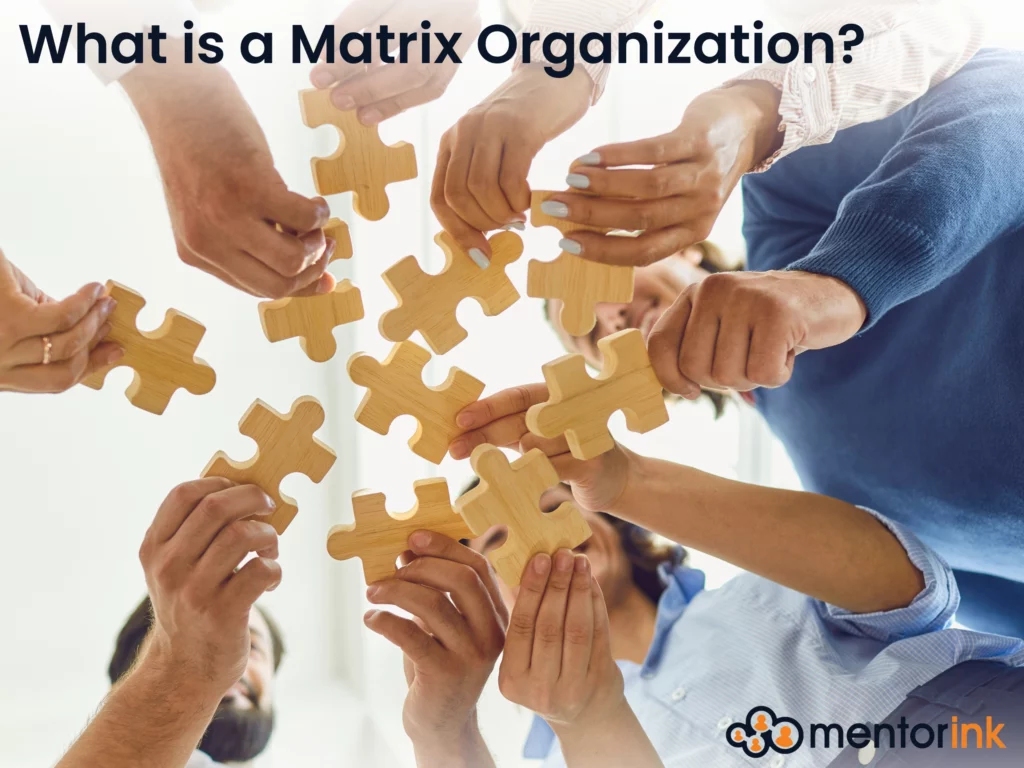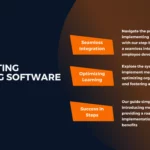
Organizational structure can vary in different ways. Many companies use the distinctive and frequently intricate matrix organization structure to enhance project management and workflow effectiveness. In contrast to conventional hierarchical structures, this permits greater flexibility, collaboration among departments, and shared responsibility.
The Definition of Matrix Organization
Instead of working to a single manager or supervisor, employees in a matrix organization are liable to many managers or supervisors. It combines two or more organizational forms; functional departments (such as marketing, finance, or HR) are typically combined with project or product teams. Because of the double chain of command this establishes, employees can operate concurrently in many departments or teamworks.
To put it another way, matrix management is when an employee is part of a department like finance but also answers to a team leader or project manager for a particular project. Organizations that manage several complicated initiatives and must effectively manage staff and resources adopt this structure.
For instance, in a matrix-style structure, an engineer could be accountable to the project manager for a new product development initiative as well as the head of the engineering department. Because workers from several departments collaborate to accomplish the organization’s objectives, this approach promotes cross-functional cooperation.
Types of Matrix Organization
There are several variations of matrix organizations depending on how authority and responsibility are distributed across the structure. The main types of matrix organizational structures are:
Functional Matrix
The functional manager has the majority of authority and decision-making ability in a functional matrix organization. Also, project managers mostly oversee activities and have little control over them. Because department-specific goals continue to play a major role in their daily work, employees have a tendency to remain dedicated to their functional departments.
Balanced Matrix
A balanced matrix enables a more equitable power split between project and functional managers. Employees are expected to manage their time and responsibilities between departmental activities and project-related obligations, with equal authority held by both management. With this arrangement, the company benefits through the attention and assets of functional units and, thanks to committed management, project success is guaranteed.
Strong Matrix
In a strong matrix structure, the project manager takes on a more prominent role and has higher authority than functional managers. The situation is more prevalent in companies where team members are generally assigned to projects rather than their functional areas and project work is given top priority. The project manager is ultimately accountable for the project’s performance and has greater say over how decisions are made and resources are distributed.
Advantages of the Matrix Organization
The benefits of a matrix organizational structure lie in its ability to increase flexibility, collaboration, and resource utilization.
Flexibility and Resource Efficiency
The matrix structure provides flexible and efficient organization. Moreover, it lets organizations use resources effectively across projects without overloading any department. Employees can work on multiple projects at once, helping organizations make the most of their workforce.
Enhanced Collaboration in the Organization
Matrix organizations let employees from different departments work together. The different experts work together to come up with new ideas. It also helps employees from different areas work together.
Improved Communication Ambient
With dual management, employees communicate regularly with both functional and project managers. This communication ensures that both the department’s and the project’s needs are met, reducing the risk of miscommunication or mismanagement.
Accountability and Responsibility
In a matrix structure, managers share the responsibility for employee performance and project success. Functional managers focus on developing their employees’ technical skills, while project managers ensure that project objectives are met. This shared responsibility ensures a more balanced approach to employee development and project completion.
How Matrix Organization Helps the Work Environment
A matrix type organization can significantly enhance the work environment by promoting a more dynamic, engaged, and collaborative atmosphere.
Skill Development and Growth
In a matrix organization, employees gain exposure to different projects and departments. This variety of work helps them develop new skills and grow professionally. Employees benefit from learning from different managers and colleagues, which increases their adaptability and broadens their expertise.
Enhanced Workplace Engagement
Employees who work on several projects feel more challenged and engaged. They frequently take part in fascinating projects that directly advance the development of the business. Increased job satisfaction and employee retention may result from this involvement.
More Effective Decision-Making
Decision-making processes benefit from the diverse viewpoints that are brought to the table by matrix organizations’ integration of employees with varying specialties. This results in comprehensive solutions and improved decision-making in general.


